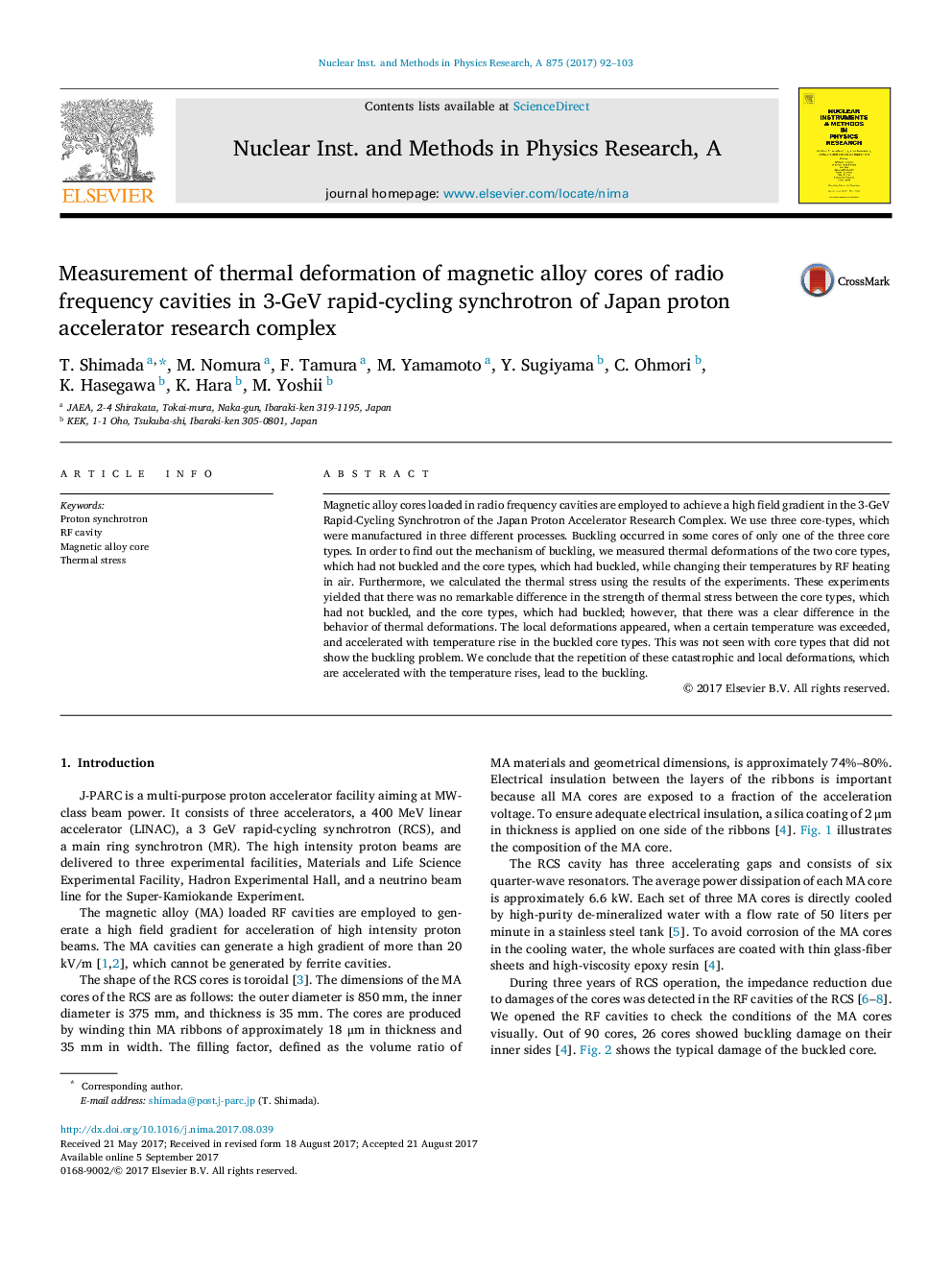| Article ID | Journal | Published Year | Pages | File Type |
|---|---|---|---|---|
| 5492646 | Nuclear Instruments and Methods in Physics Research Section A: Accelerators, Spectrometers, Detectors and Associated Equipment | 2017 | 12 Pages |
Abstract
Magnetic alloy cores loaded in radio frequency cavities are employed to achieve a high field gradient in the 3-GeV Rapid-Cycling Synchrotron of the Japan Proton Accelerator Research Complex. We use three core-types, which were manufactured in three different processes. Buckling occurred in some cores of only one of the three core types. In order to find out the mechanism of buckling, we measured thermal deformations of the two core types, which had not buckled and the core types, which had buckled, while changing their temperatures by RF heating in air. Furthermore, we calculated the thermal stress using the results of the experiments. These experiments yielded that there was no remarkable difference in the strength of thermal stress between the core types, which had not buckled, and the core types, which had buckled; however, that there was a clear difference in the behavior of thermal deformations. The local deformations appeared, when a certain temperature was exceeded, and accelerated with temperature rise in the buckled core types. This was not seen with core types that did not show the buckling problem. We conclude that the repetition of these catastrophic and local deformations, which are accelerated with the temperature rises, lead to the buckling.
Related Topics
Physical Sciences and Engineering
Physics and Astronomy
Instrumentation
Authors
T. Shimada, M. Nomura, F. Tamura, M. Yamamoto, Y. Sugiyama, C. Ohmori, K. Hasegawa, K. Hara, M. Yoshii,
